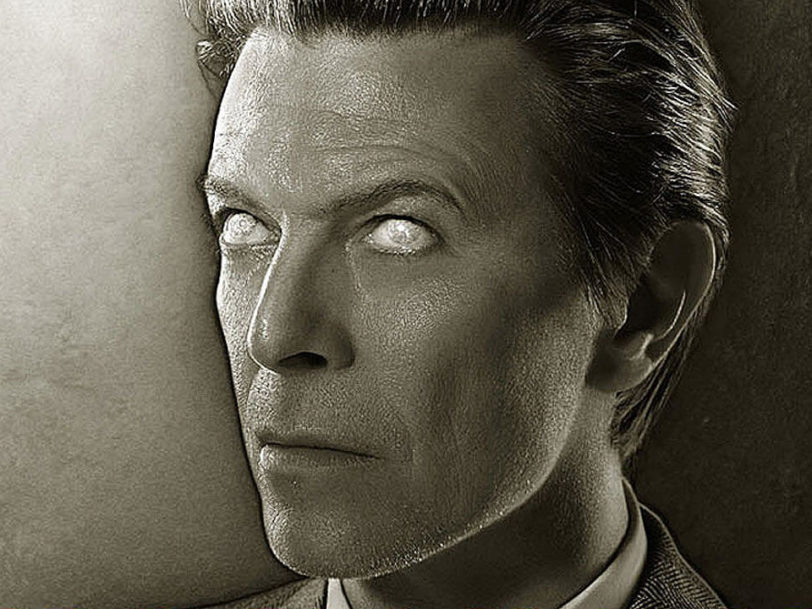Bowie clearly relished working with his old producer, as he revealed in a BowieNet webchat on 16 August 2000, ahead of the Heathen sessions: “What Tony and I always found to be one of our major strengths is the ability to free each other up from getting into a rut. So no doubt there will be some huge challenges, but also some pretty joyous occasions. In short, really looking forward to this.”
“I was literally crying when I was writing”
After demo sessions held across Visconti’s home studio and Looking Glass Studios in Manhattan, New York City, in the summer of 2001, Bowie and Visconti were ready to begin Heathen in earnest. Following a recommendation from guitarist David Torn (Madonna , k.d. lang, Tori Amos), the pair settled on Allaire Studios, a new complex nestled among the mountains of upstate New York.
The beauty and remoteness of the location made a big impression on Bowie, as he told Interview magazine in June 2002. “It’s stark, and it has a Spartan quality about it. In this instance, the retreat atmosphere honed my thoughts… I don’t know what happened up there, but something clicked for me as a writer. I’ve written in the mountains before, but never with such gravitas.” He elaborated on this with The Daily Beast, revealing, “I’m in there working at six in the morning, just playing the synthesiser, the piano, and working on what we’re going to do that day – and I’m looking out at the deer and I don’t believe this is happening to me, the serenity and the majesty of it. How beautiful the world is… I reflected with such intensity and it came over me like a wave. It really did. Some mornings I was literally crying when I was writing a song.”
“We had a great day, a much-needed day”
A routine emerged, with Visconti and drummer Matt Chamberlain (Bob Dylan, Fiona Apple, Randy Newman) joining Bowie in the studio mid-morning to work on the material. They recorded 19 backing tracks in two weeks, before additional musicians were drafted in to flesh out the songs, among them David Torn, Dream Theater keyboardist Jordan Rudess and The Scorchio Quartet.
Towards the end of the Allaire sessions, however, the events of 9/11 shocked the world and Heathen went on hold. Writing on his blog, Visconti reflected on how returning to work became a healing process for all involved: “After a few days we called for The Scorchio Quartet to see if they felt like recording. We had very little left to do. Of course, it was the best thing to do, to try doing something to make life seem normal again. They braved all the checkpoints out of the city, crammed into violist Martha Mooke’s car and arrived a little shaken but anxious to make music.”
Visconti had already written scores for the orchestra, and he and Bowie asked the string players to play through guitar amps. “It all worked so well,” Visconti recalled. “We had a great day, a much-needed day.” By 15 September, everyone “packed up and went back to our respective homes, to take a break” before reconvening at Looking Glass Studios for overdubs, where another old 70s cohort, Earl Slick – who had appeared on the Young Americans and Station To Station albums – recorded parts for Everyone Says ‘Hi’. More guest turns came from Dave Grohl (helping to turn Neil Young’s I’ve Been Waiting For You into a doomy glam stomper) and Pete Townshend (delivering a coruscating solo on Slow Burn).




